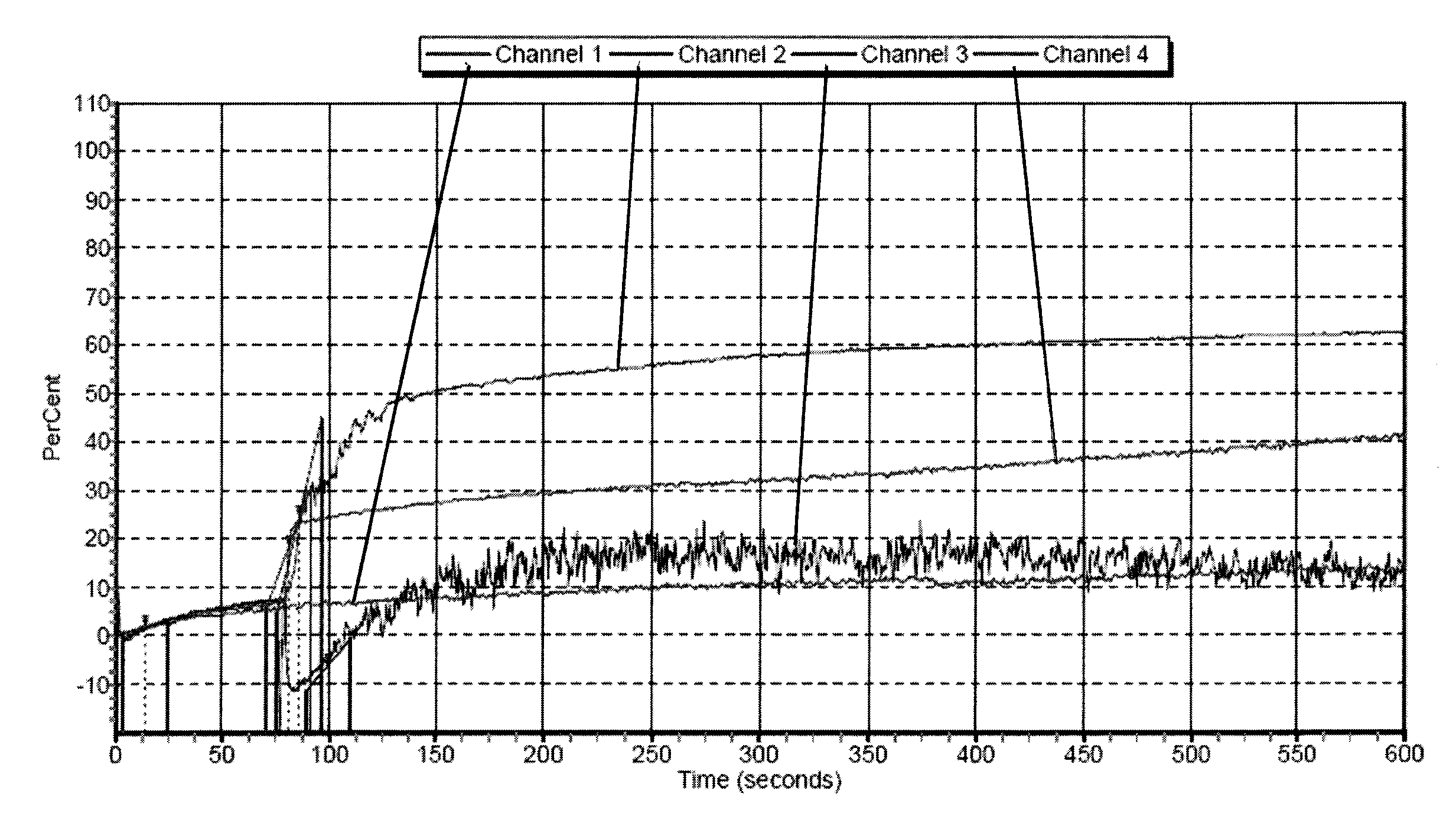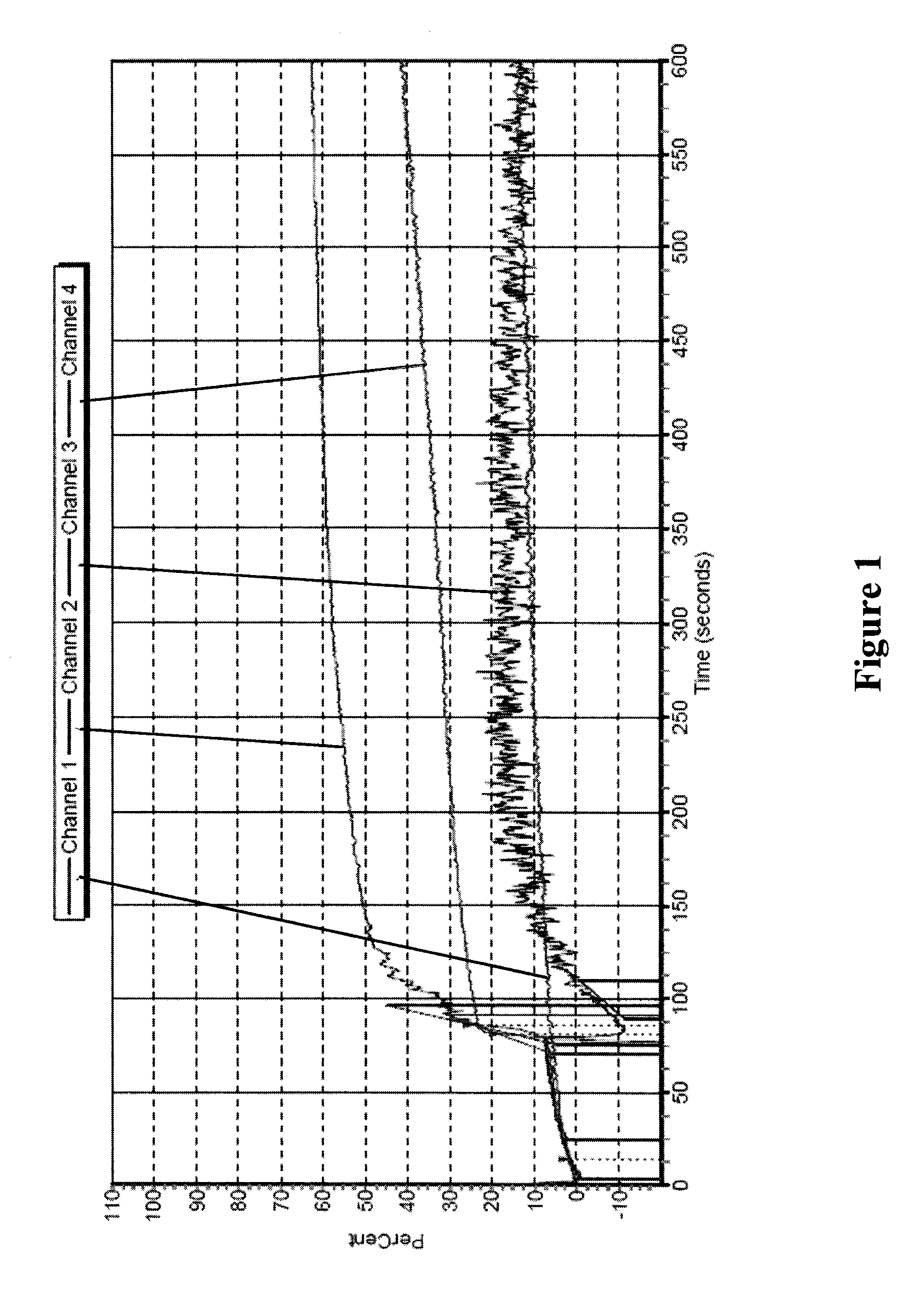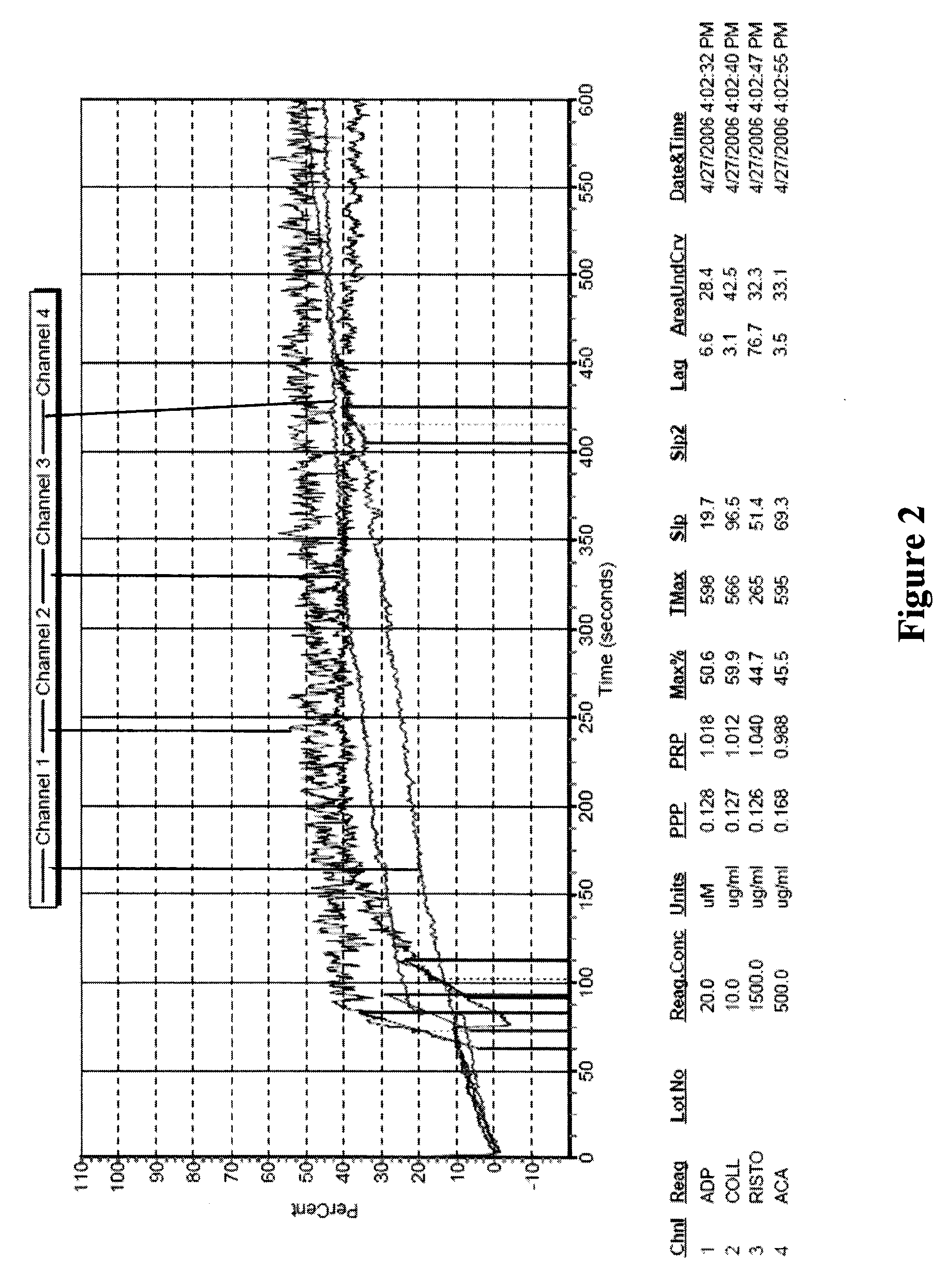Freeze-dried platelets as a diagnostic agent
a platelet and freeze-dried technology, applied in the field of medicine, can solve the problems of excessive blood loss, clot formation may be compromised, occluded, etc., and achieve the effect of fast response, superior response to agonists, and rapid respons
- Summary
- Abstract
- Description
- Claims
- Application Information
AI Technical Summary
Benefits of technology
Problems solved by technology
Method used
Image
Examples
example 1
Initial Preparation of Reagents and Platelets
[0116]Buffers and Solutions:
[0117]Suspension Buffer:
[0118]9.5 mM HEPES
[0119]75 mM NaCl
[0120]4.8 mM KCl
[0121]5 mM glucose
[0122]12 mM NAHCO3
[0123]100 mM Trehalose
[0124]1% EtOH
[0125]Stock Solutions and Reagents:
[0126]30% Polysucrose Solution (12 g Polysucrose Ficoll™ PM400 in 40 ml water)
[0127]1×PBS (standard solution)
[0128]PBSE, pH 7.4 (PBS plus 10 mM EDTA)
[0129]PBSE, pH 6.5
[0130]Remove all buffers and other reagents from refrigerators, freezers, and other storage areas. Allow each to reach ambient temperature (approximately 21° C.-25° C.). All buffers that require daily preparation should be made while previously prepared buffers are warming. When platelet units arrived, they should be placed on an orbital shaker reciprocating at approximately 50 RPM until use.
example 2
Initial Preparation of Pooled Plasma
[0131]If using more than one unit of plasma, pool all acceptable units of platelet rich plasma (PRP) in one large plastic beaker. Take a platelet cell count of the undiluted pooled PRP on an instrument suitable for platelet counting, such as the AC·T 10 Coulter counter. Stir and measure the pH of the PRP. If the pH is greater than 6.8, adjust the pH to between 6.4 and 6.8 with ACD. If the pH adjustment is overshot (too much ACD added) to between 6.2-6.4, verify that the platelets are still swirling and if so, continue to the next step.
[0132]If the original platelet source was an apheresis unit, skip the following step. If the original platelet source was a random donor unit (RDU), perform the following RBC removal step. Divide PRP equally between 50 ml conical tubes. Spin the PRP in a swinging bucket centrifuge for 3 to 5 minutes at 750×g at room temperature. Remove the PRP and pool in a clean plastic beaker, leaving behind the pellet of RBCs at t...
example 3
Preparation of Lyophilized Platelets
[0136]DMSO Incubation
[0137]Resuspend platelets gently in a small volume of PBSE, pH7.4, taking care not to mix vigorously, resulting in activation of platelets. Where possible, use gentle “puffs” of PBSE, pH 7.4 to resuspend the platelets.
[0138]Add 10 ul of DMSO for every 1×109 platelets total.
[0139]Incubate platelets with DMSO at room temperature for 30 minutes while shaking gently on an orbital shaker (˜50 RPM).
[0140]After incubation, gently add a large volume of PBSE, pH6.5 to the platelet samples with a transfer pipette until the samples reach a pH of 6.5-6.7.
[0141]Aliquot out the resuspended platelets evenly between clean conical centrifuge tubes.
[0142]Centrifuge the platelets in a swinging bucket centrifuge at 1000×g for 10 minutes at room temperature. After the spin, remove the supernatant, leaving the platelet pellet in the bottom of the conical tube.
[0143]Platelet Loading
[0144]Resuspend the platelet pellet in a minimal volume of Suspensio...
PUM
 Login to View More
Login to View More Abstract
Description
Claims
Application Information
 Login to View More
Login to View More - R&D
- Intellectual Property
- Life Sciences
- Materials
- Tech Scout
- Unparalleled Data Quality
- Higher Quality Content
- 60% Fewer Hallucinations
Browse by: Latest US Patents, China's latest patents, Technical Efficacy Thesaurus, Application Domain, Technology Topic, Popular Technical Reports.
© 2025 PatSnap. All rights reserved.Legal|Privacy policy|Modern Slavery Act Transparency Statement|Sitemap|About US| Contact US: help@patsnap.com



